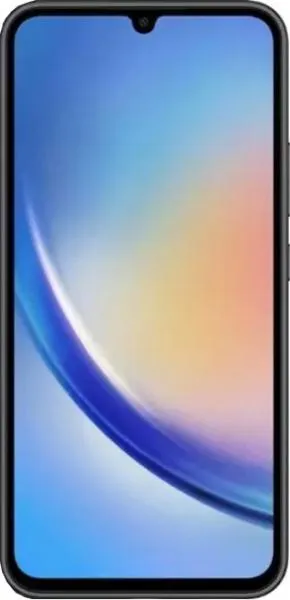1. Specifications Comparison
| Feature | Samsung Galaxy A34 | Motorola Moto G85 | Practical Impact |
|---|---|---|---|
| Design | |||
| Dimensions (mm) | 161.3 x 78.1 x 8.2 | 161.9 x 73.1 x 7.6 | Moto G85 is slightly taller and narrower, but thinner. Negligible difference in hand feel. |
| Weight (g) | 199 | 171 | Moto G85 is noticeably lighter, improving one-handed use. |
| Display | |||
| Display Type | Super AMOLED | P-OLED | AMOLED generally offers more vibrant colors and better outdoor visibility; P-OLED boasts perfect blacks and potential for power saving. |
| Size (inches) | 6.6 | 6.67 | Negligible size difference. |
| Resolution | 1080 x 2340 | 1080 x 2400 | Virtually identical sharpness. |
| Refresh Rate (Hz) | 120 | 120 | Both offer smooth scrolling and animations. |
| Peak Brightness (nits) | 1000 (HBM) | 1600 (peak) | Moto G85 likely has significantly better visibility in direct sunlight. |
| Color Depth | Not specified | 1B | Moto G85 supports a wider color gamut, resulting in more nuanced and accurate colors. |
| Performance | |||
| Chipset | Mediatek Dimensity 1080 | Qualcomm Snapdragon 6s Gen 3 | Both are mid-range chipsets. Performance differences likely minimal for everyday tasks, but benchmarks are needed for definitive comparison. |
| CPU | Octa-core (2x2.6 GHz A78 & 6x2.0 GHz A55) | Octa-core (2x2.3 GHz A78 & 6x2.0 GHz A55) | A34 has slightly faster prime cores, potentially offering a slight edge in demanding tasks. |
| GPU | Mali-G68 MC4 | Adreno 619 | GPU performance needs further benchmarking for accurate comparison. Impacts gaming and graphically intensive applications. |
| RAM | 6/8 GB | 8/12 GB | Moto G85 offers configurations with more RAM, improving multitasking and app loading times. |
| Camera | |||
| Main Camera (MP) | 48 | 50 | Higher megapixel count doesn't guarantee better image quality. Sensor size, aperture, and processing play a crucial role. |
| Video Recording | 4K@30fps | 1080p@60fps | A34 offers higher resolution video recording, while Moto G85 allows for smoother 60fps at 1080p. |
| DXOMARK Score | 92 | 88 | A34 scores slightly higher overall in DXOMARK, but Moto G85 has a significantly higher video score (109 vs 78). This suggests Moto G85 might have better video stabilization and overall video quality. |
| Battery | |||
| Capacity (mAh) | 5000 | 5000 | Identical battery capacity. Real-world battery life depends on usage and optimization. |
| Fast Charging (W) | 25 | 30 | Moto G85 offers slightly faster charging. |
2. Key Differences Analysis
Samsung Galaxy A34 Advantages:
- Brighter Display (in some scenarios): While the Moto G85 has a higher peak brightness, the A34's 1000 nits HBM (High Brightness Mode) might offer better visibility in specific high ambient light situations. This requires further testing to confirm.
- Higher Resolution Video Recording: 4K video recording capability offers more detail compared to the Moto G85's 1080p.
Motorola Moto G85 Advantages:
- Lighter and Thinner: Noticeably lighter and slightly thinner design.
- Higher Peak Brightness: Potentially much brighter display in direct sunlight.
- Wider Color Gamut: More accurate and vibrant colors on display.
- More RAM: Options for up to 12GB RAM for smoother multitasking.
- Faster Charging: 30W fast charging for quicker top-ups.
- Better Video Quality (Potentially): Significantly higher DXOMARK video score suggests superior video stabilization and quality.
Trade-offs:
- A34's AMOLED vs. G85's P-OLED: AMOLED generally offers better brightness and color vibrancy in average conditions, while P-OLED excels in dark environments with perfect blacks and potentially better power efficiency.
- A34's 4K Recording vs. G85's 1080p@60fps: Choosing between higher resolution and smoother frame rates depends on individual preferences.
3. User Profiles & Recommendations
Samsung Galaxy A34:
- Users prioritizing vibrant display and higher resolution video recording.
- Users who often record videos in bright outdoor conditions.
Motorola Moto G85:
- Users prioritizing a lighter, thinner phone with a brighter display for excellent outdoor visibility.
- Users who value smooth multitasking and faster charging.
- Users who prioritize video recording quality and smoothness over resolution.
- Gamers and users of graphically intensive applications (pending further GPU benchmark comparisons).
4. Decision Framework
Key Questions for Buyers:
- How important is outdoor visibility? Moto G85 likely has a significant advantage here.
- Is 4K video recording a must-have? A34 is the only option for 4K.
- Which display technology do you prefer? AMOLED (A34) generally offers punchier colors, while P-OLED (G85) provides perfect blacks and potential power savings.
Scenario-Based Recommendations:
- Heavy outdoor use: Moto G85 due to its higher peak brightness.
- Focus on video recording: A34 for 4K resolution; Moto G85 for potentially smoother and more stable 1080p footage.
- Tight budget: Compare prices for specific RAM/storage configurations as both fall in the "medium price" range.
My Choice: Motorola Moto G85
While the Samsung Galaxy A34 offers 4K video recording, the Motorola Moto G85's overall package is more appealing to me. The lighter weight, brighter display with a wider color gamut, faster charging, and potential for better video quality (based on DXOMARK) are significant advantages. The larger RAM options in the Moto G85 also future-proof the device better for multitasking and demanding applications. While I acknowledge the A34's strengths in specific areas, the G85's combination of features better suits my personal preferences and anticipated usage scenarios.

